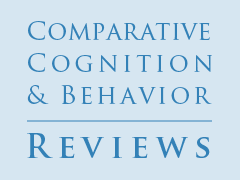Metacognition in animals: how do we know that they know?
J. Jozefowiez,
Universidade do Minho
J. E. R. Staddon,
Duke University
D. T. Cerutti,
California State University-East Bay
Reading Options:
Download/Read PDF | Add to Endnote
Abstract
Research on animal metacognition has typically used choice discriminations whose difficulty can be varied. Animals are given some opportunity to escape the discrimination task by emitting a so-called uncertain response. The usual claim is that an animal possesses metacognition if (a) the probability of picking the uncertain response increases with task difficulty, and (b) animals are more accurate on “free-choice” trials —i.e., trials where the uncertain response was available but was not chosen—than on “forced-choice” trials, where the uncertain response is unavailable. We describe a simple behavioral economic model (BEM), based on familiar learning principles, and thus lacking any metacognition construct, which is able to meet both criteria in most of these tasks. We conclude that rather than designing ever more complex experiments to identify “metacognition,” a necessarily ill-defined concept, knowledge might better be advanced not by further refining behavioral criteria for the concept, but by the development and testing of theoretical models for the clever behavior that many animals show in these experiments.
Keywords: metacognition, comparative metacognition, uncertainty monitorying, metamemory, quantitative modeling
Jozefowiez, J., Staddon, J. E. R., & Cerutti, D.T. (2009). Metacognition in animals: how do we know that they know? Comparative Cognition & Behavior Reviews, 4, 29-39. Retrieved from https://comparative-cognition-and-behavior-reviews.org/ doi:10.3819/ccbr.2009.40003
